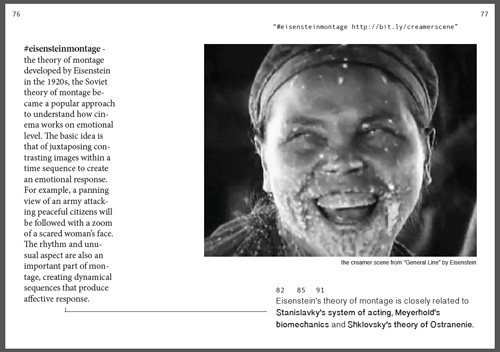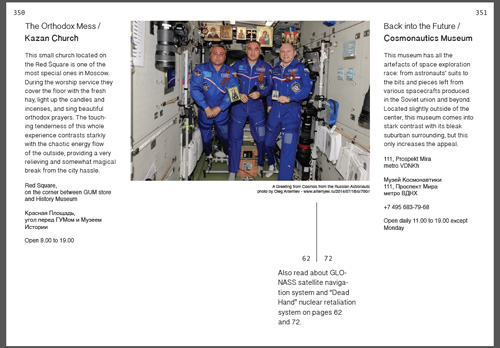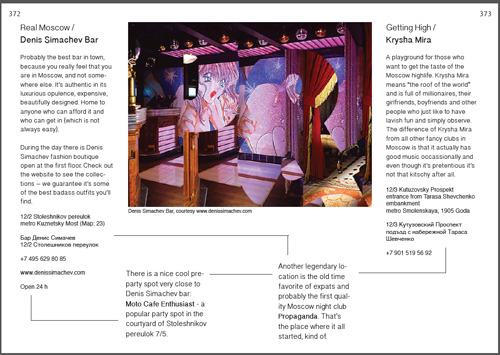Back in 2001, together with Danil Perushev, I created an informational resource about Russia WayToRussia.Net. In 2014, I published a book inspired by the guide — Way to Russia Guidance — which had a nonlinear narrative structure with cross-sectional links inviting the reader to travel through places and ideas that were related to Russian culture and psyche. I presented the book at Motto book store in Berlin in December 2014.
…
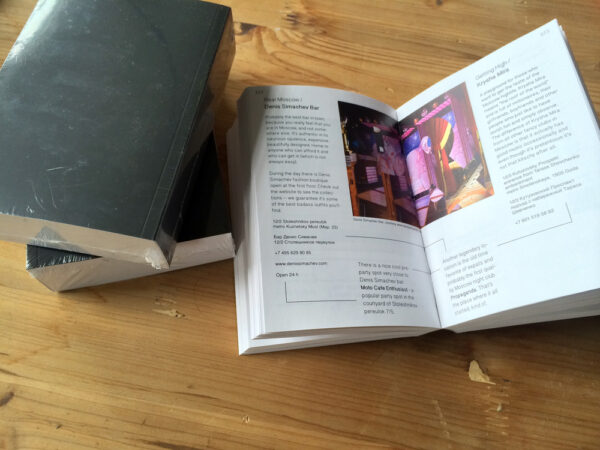 …
…
Since the beginning, our intention was to emphasize various aspects of Russia that seemed weird, but that also made it special and different from the rest of the world. We wouldn’t go into detail about the most popular tourist sites or ramble about Dostoyevsky, but, rather, talk about contemporary artists, like Oleg Kulik, or about that place in the Moscow center that kept that special Soviet flair. Luckily, back in 2001, there were not many travel guides online, so we could take that niche and become the mainstream guide with our non-mainstream content.
In 2014, I published a book called Way to Russia Guidance, a travel guide to the Russian psyche, culture, and territory. My main objective was to create a book that was a work of venture fiction, just like WayToRussia.Net. Rather than attempting to depict an objective version of reality, it contained multiple semi-fictional elements. Their objective was to shape the expectations of travelers to such an extent that while traveling they would demand that version of reality instead of the real thing. Those expectations would still be rooted in certain aspects of Russian culture that were already there, so they would simply emphasize what already exists and shed some more light on it, hopefully making it grow and evolve.
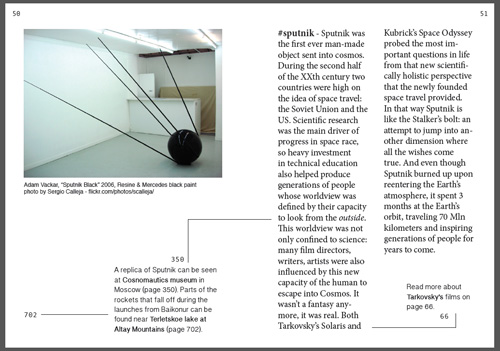
The book was presented in December 2014 at Motto, an independent bookstore in Berlin, known for its huge collection of art books and self-published works.
The structure of the book was organized as a networked narrative. While it could be read chronologically, the pages were full of cross-sectional links. A place in Moscow would be linked to a film that was shot there, which, in turn, would link to a philosophical concept that in itself would link back to a natural place in Siberia that was somehow related to it. In that way, the reader could travel through the book in a non-linear associate way.
